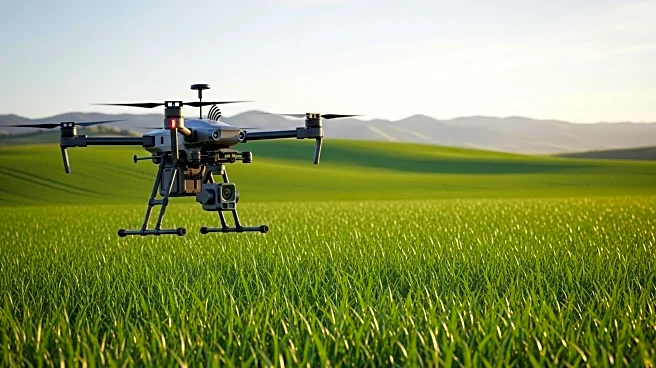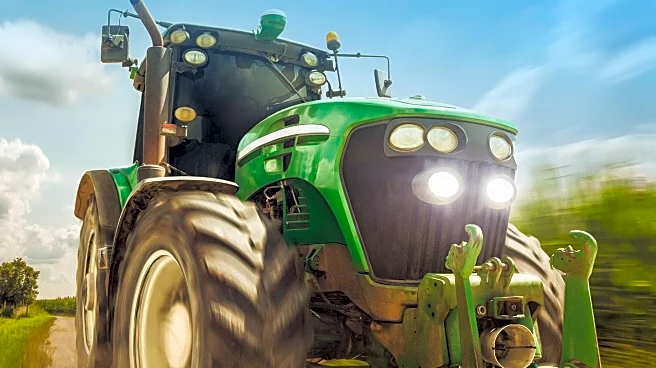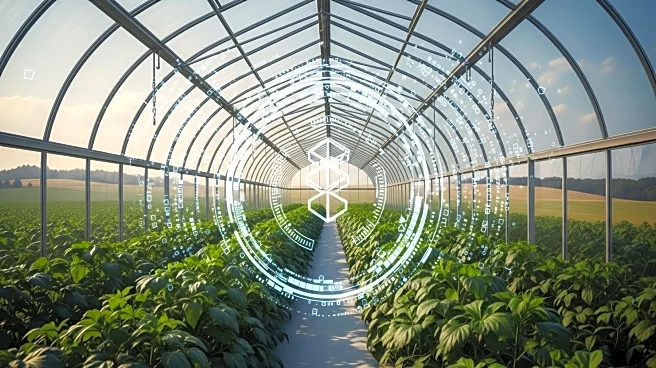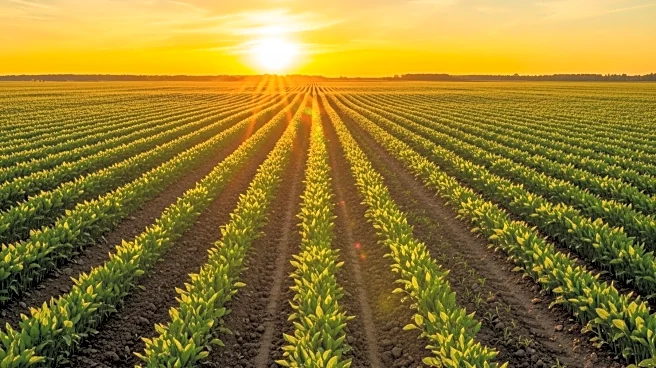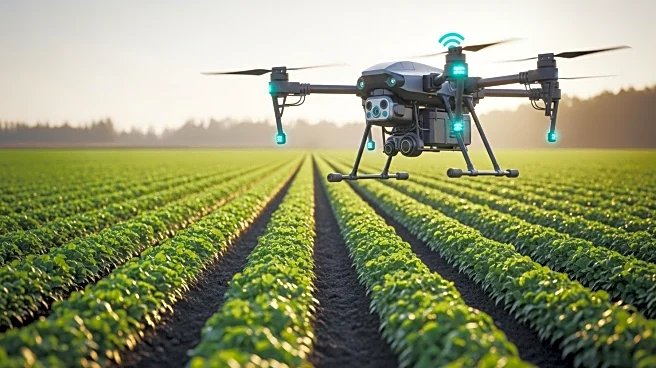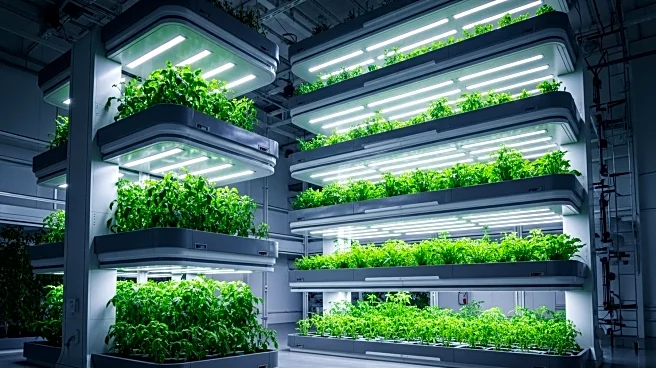What's Happening?
The Federal Aviation Administration (FAA) has proposed a new rule to allow commercial drones to operate beyond the visual line of sight (BVLOS) of their operators. This rule, titled 'Normalizing Unmanned Aircraft Systems Beyond Visual Line of Sight Operations,' aims to establish a standardized regulatory framework for routine commercial drone flights outside of the operator's visual line of sight. The proposal seeks to replace the current process of obtaining individual waivers for BVLOS operations with a scalable, performance-based framework. Key aspects of the rule include operational altitude limits, aircraft weight specifications, and airworthiness acceptance based on industry standards. The rule is expected to significantly benefit sectors like agriculture by allowing drones to cover large areas efficiently, thus enhancing crop monitoring, livestock management, and water management.
Why It's Important?
The proposed BVLOS rule is poised to revolutionize the agricultural industry by enabling more efficient and expansive use of drones. Farmers and ranchers stand to gain significantly from this development, as it allows for comprehensive coverage of large areas without the need for constant visual contact. This can lead to improved crop monitoring, timely detection of issues, and precise resource management, ultimately optimizing operations and reducing costs. The rule also introduces a scalable framework that could streamline drone operations across various industries, potentially boosting productivity and innovation. As the FAA reviews public comments and moves towards finalizing the rule, stakeholders in agriculture and other sectors are likely to experience transformative changes in their operational capabilities.
What's Next?
The FAA is currently reviewing nearly 2,000 public comments received during the comment period, which closed on October 4, 2025. The agency is expected to publish the final BVLOS rule in the first quarter of 2026, likely by February or March. Once finalized, the rule will provide a clear pathway for expanded drone operations, requiring operators to adhere to new standards and obtain necessary permits or certificates. The agricultural industry, among others, will need to prepare for the integration of BVLOS capabilities, potentially investing in new technologies and training programs to maximize the benefits of this regulatory change.
Beyond the Headlines
The introduction of BVLOS operations in agriculture could have broader implications for rural communities and the environment. By enabling more efficient resource management, the rule could contribute to sustainable farming practices and reduce environmental impact. Additionally, the increased use of drones may spur technological advancements and create new economic opportunities in rural areas, potentially revitalizing local economies. However, it also raises questions about privacy and security, as expanded drone operations could lead to increased surveillance capabilities. Balancing these benefits and concerns will be crucial as the industry adapts to the new regulatory landscape.
